Your Passport to the Past
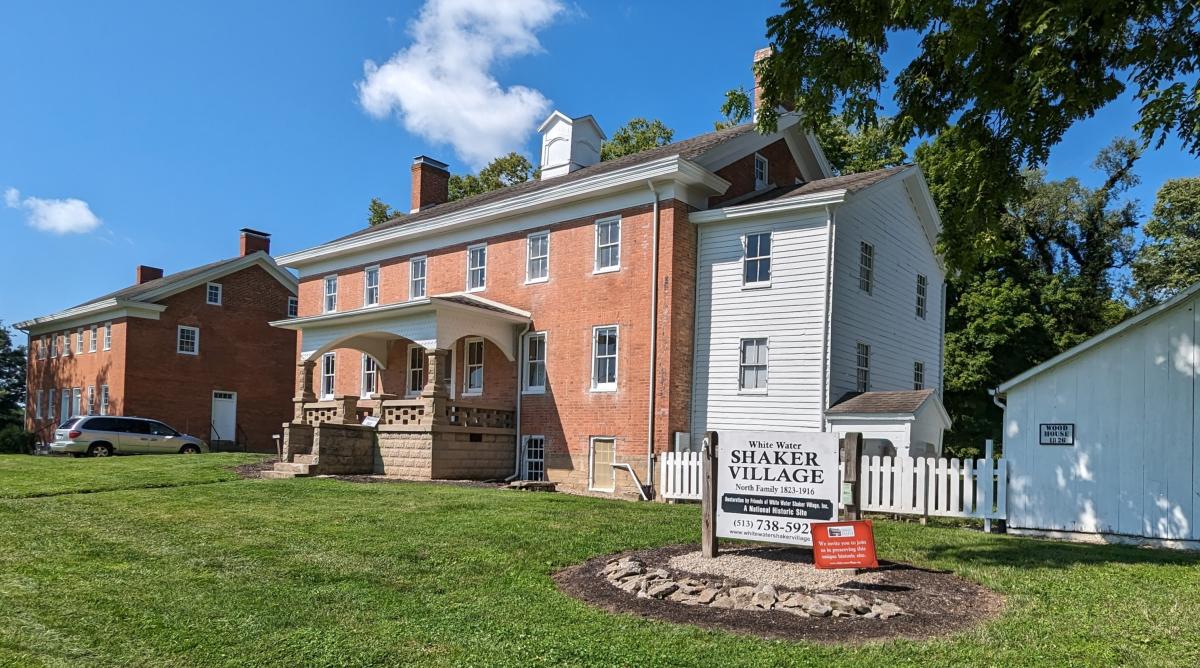 Did you know that Harrison, Ohio has one of only twenty-four remaining Shaker communal villages in all the United States? Dot (colleague, director of fun and photographer) and I did not. Hidden in plain sight along Oxford Road near Miami White Water Forest are several buildings that showcase a glimpse into the past and a community that was once thriving and innovative. Welcome to White Water Shaker Village.
Did you know that Harrison, Ohio has one of only twenty-four remaining Shaker communal villages in all the United States? Dot (colleague, director of fun and photographer) and I did not. Hidden in plain sight along Oxford Road near Miami White Water Forest are several buildings that showcase a glimpse into the past and a community that was once thriving and innovative. Welcome to White Water Shaker Village.
Brief History
In 1823 the United Society of Shakers (United Society of Believers in Christ’s Second Appearing) came to Crosby Town and Morgan Townships to share their religion with a group of settlers. There they found fertile land for farming, timber, and water. Three separate families settled the White Water Shaker village, the North Family, the South Family and the Center family. Sprawled across eight acres, are ten dwellings that make up the North Families White Water Shaker Village, established in 1823. Working together led to a lucrative Shaker industry in farming, seed innovation and broom making.
The Shaker population dwindled following the civil war. With a mixture of individuals wanting a more modern lifestyle and industrial manufacturing reduced the need for handmade goods. Today the land is owned by the Great Parks of Hamilton County with the Friends of White Water Shaker Village overseeing and caring for the structures. Friends of White Water Shaker Village graciously hosted Dot and I for a tour of the brick meeting house, the milk house, and the dwelling building where people lived. On the tour we learned about these historic buildings, Shaker life, innovation, and commerce. Here are just a few things we learned while touring the dwellings located on the North family plot.
Shaker Did You Know
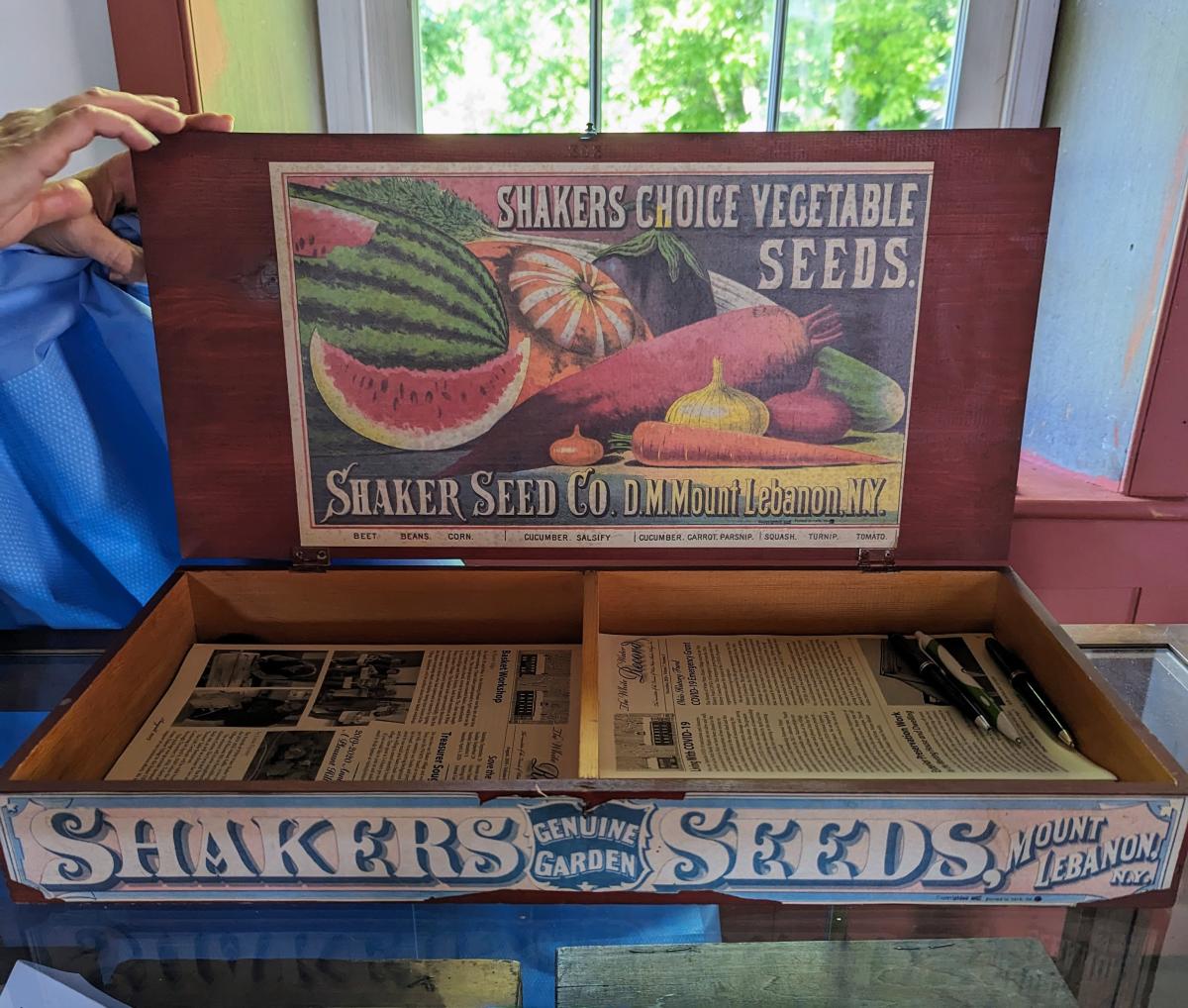 Did you know that the Shakers invented seed packets? Seeds used to be sold in bulk, but Shaker innovation created small packets to ship and store seeds. So when you’re at your local garden center buying seeds for your garden, thank the Shakers.
Did you know that the Shakers invented seed packets? Seeds used to be sold in bulk, but Shaker innovation created small packets to ship and store seeds. So when you’re at your local garden center buying seeds for your garden, thank the Shakers.
Also, did you know that we owe the still-popular design of brooms to the Shakers? Brooms used to be round. The Shakers were the first to realize that a flat broom is much better at sweeping.
Meeting House, 1827
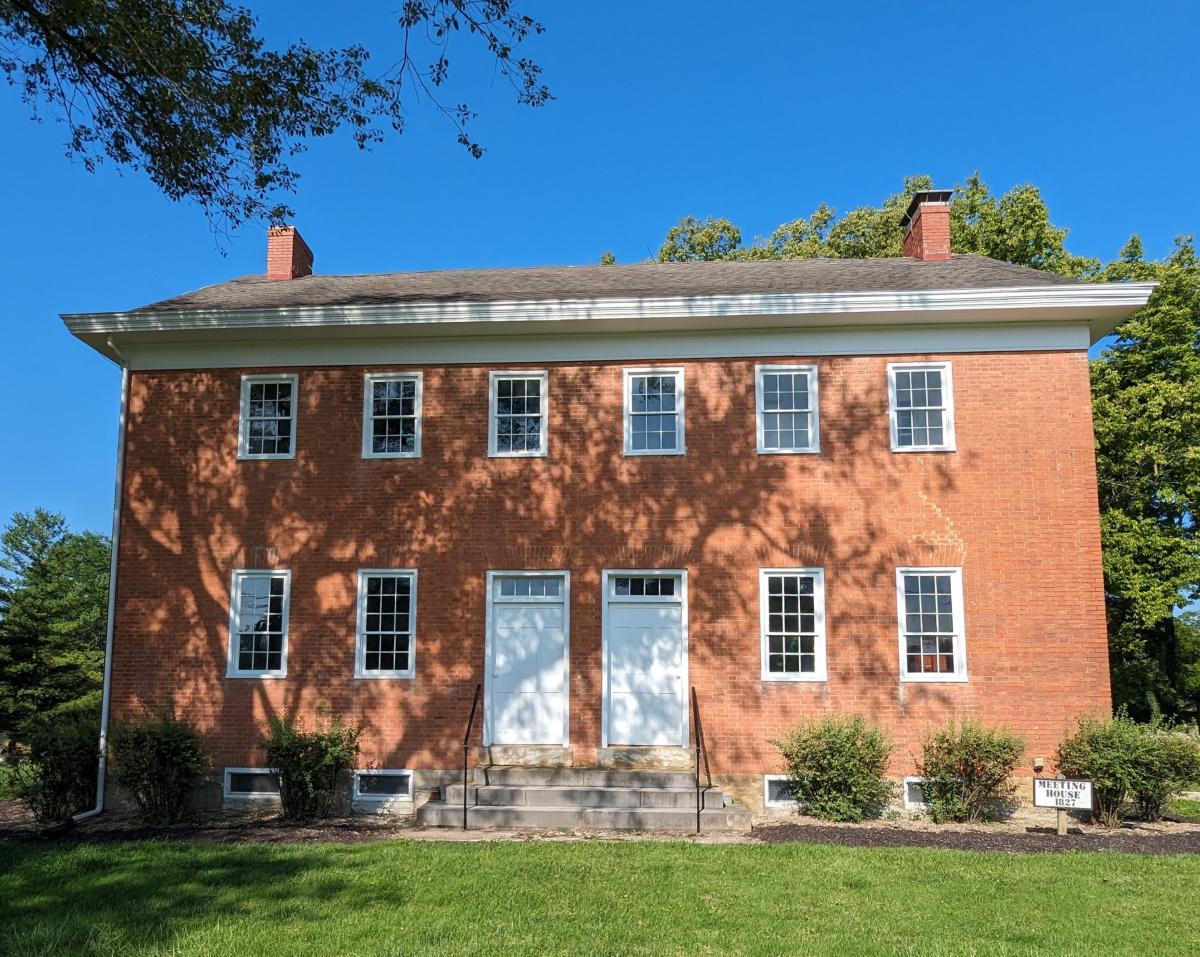 Welcome to the Meeting House. Built as the gathering spot for the community, this brick structure is unique in several ways. Shaker meeting houses were required to be wood structures. However, at the time this meeting house was constructed, wood was not easily accessible, so they made bricks using the clay found in the area and fired the bricks on the premises. Another unique feature is there are two sets of doors on the front and the back of the meeting house. Traditionally, meeting houses would only have two sets of doors at the front of the house. One for women and one for men.
Welcome to the Meeting House. Built as the gathering spot for the community, this brick structure is unique in several ways. Shaker meeting houses were required to be wood structures. However, at the time this meeting house was constructed, wood was not easily accessible, so they made bricks using the clay found in the area and fired the bricks on the premises. Another unique feature is there are two sets of doors on the front and the back of the meeting house. Traditionally, meeting houses would only have two sets of doors at the front of the house. One for women and one for men.
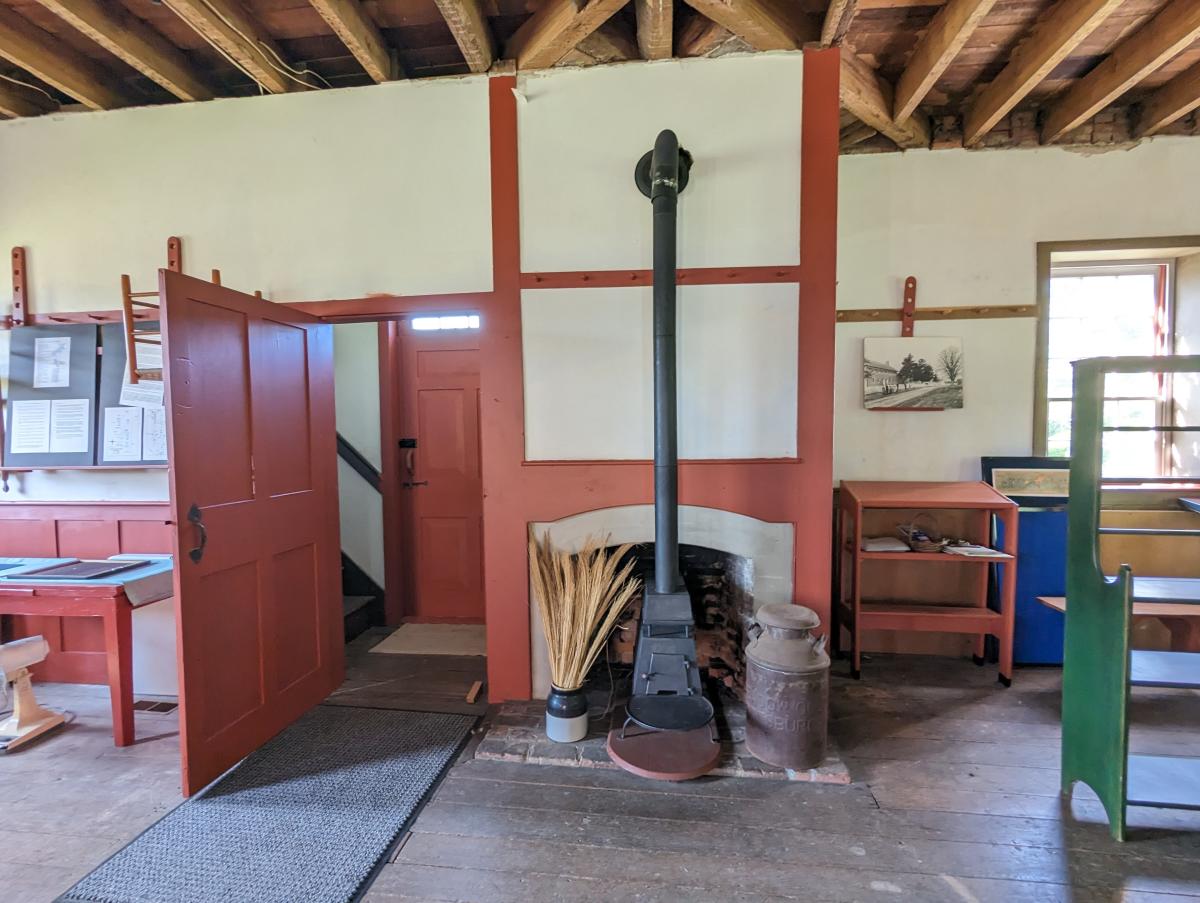
The first floor set of windows are original to the house, while the upstairs are not as they had to be restored in the 1950’s because of damage sustained during a tornado. Inside the space you will find historical objects, original features, and a peg rail that goes around the entire room and exhibits how the Shakers would maximize their space by hanging chairs.
Dwelling House, 1832
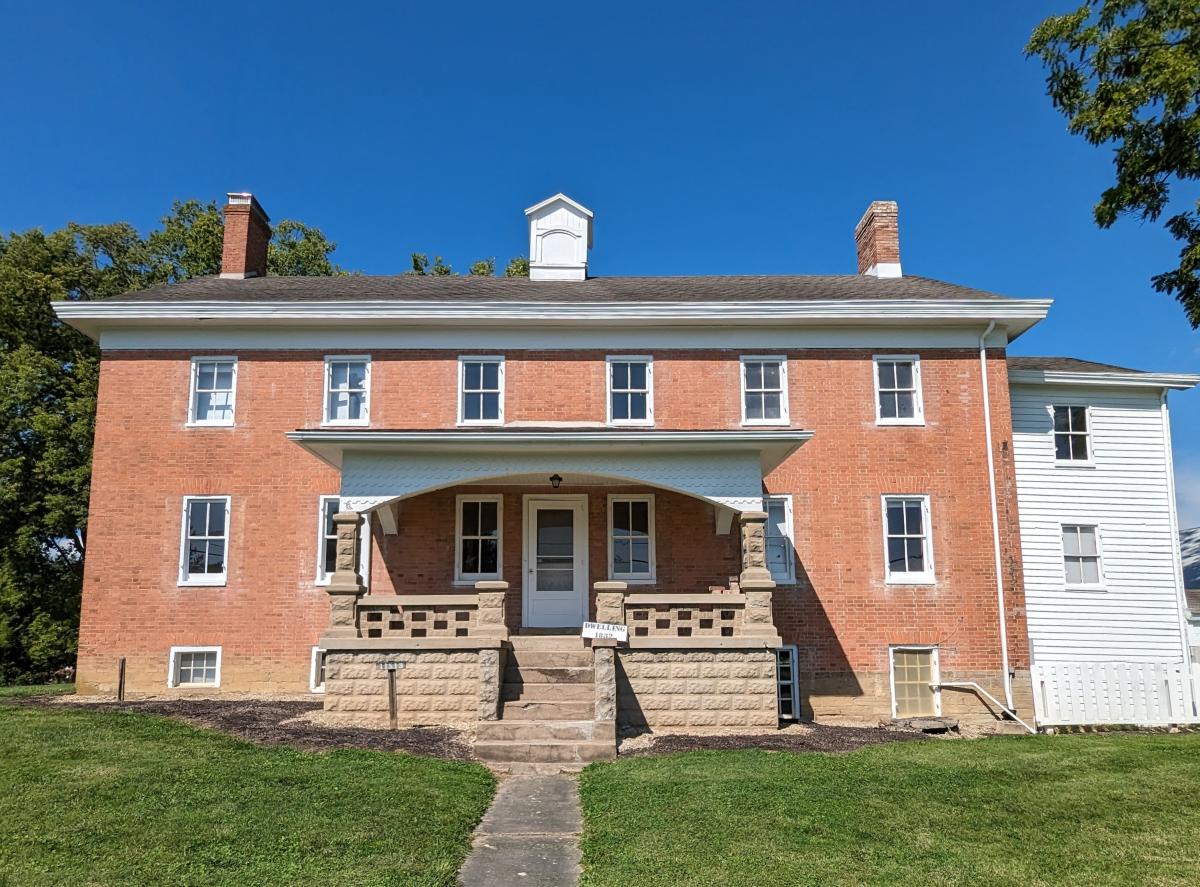 The Dwelling House features eight rooms consisting of four rooms on each floor with two rooms on each side split by a hallway and two separate sets of stairs. Each room can sleep anywhere from 4-6 individuals with a total occupancy of over 30 people at a time. Meals were served in the basement with men and women keeping to their sides of the house.
The Dwelling House features eight rooms consisting of four rooms on each floor with two rooms on each side split by a hallway and two separate sets of stairs. Each room can sleep anywhere from 4-6 individuals with a total occupancy of over 30 people at a time. Meals were served in the basement with men and women keeping to their sides of the house.
Milk House, 1849
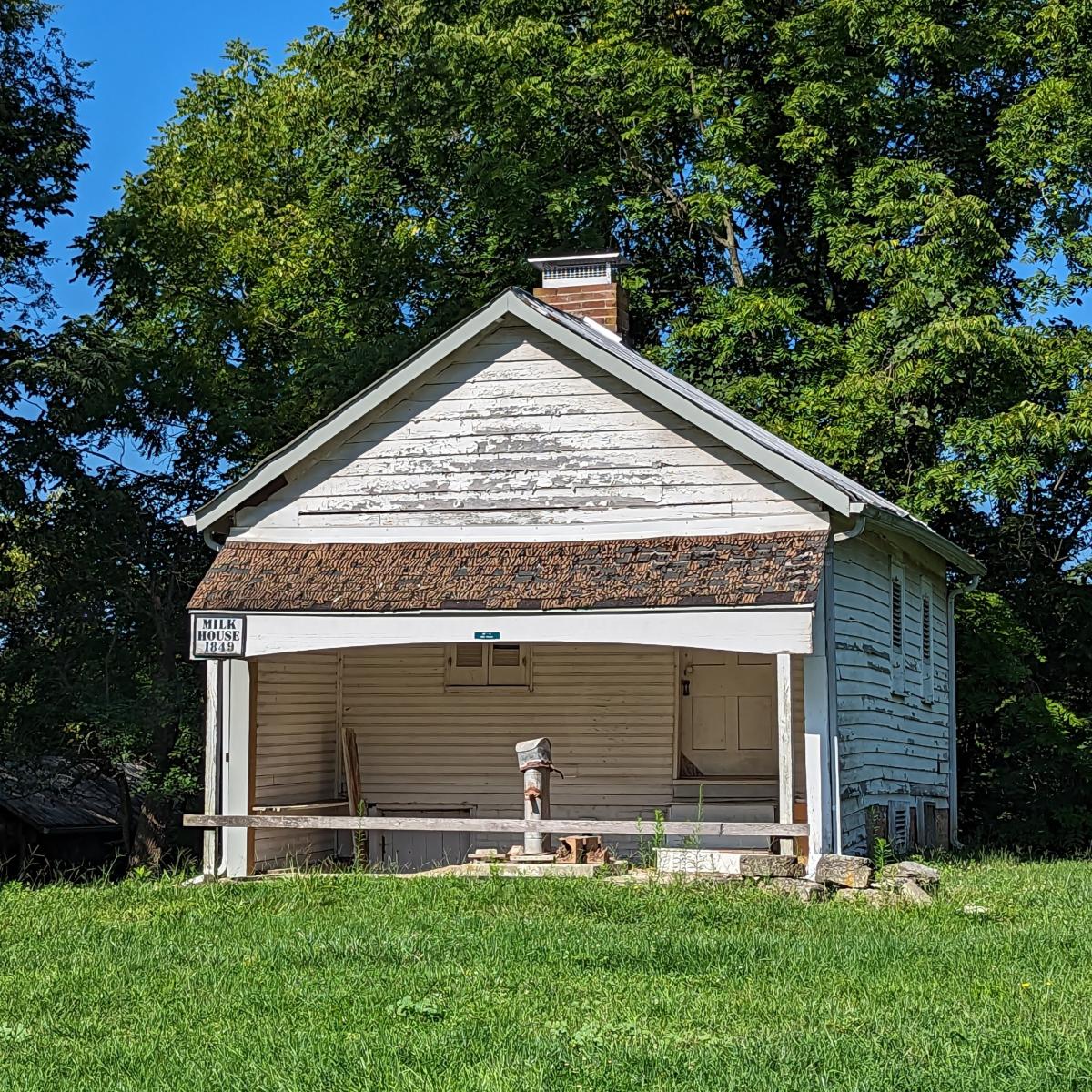 The Milk House was built to support the Shakers’ dairy operation. Milk was placed in containers and placed in cold water to preserve the milk. The basement features a trough that was fed using nearby well water.
The Milk House was built to support the Shakers’ dairy operation. Milk was placed in containers and placed in cold water to preserve the milk. The basement features a trough that was fed using nearby well water.
Friends of White Water Shaker Village
The Friends of White Water Shaker Village have done a great job over the past 20 years preserving Shaker history. Made up of roughly 140 members, they are a 501c3 that oversees the restoration and care of the village. They work diligently to apply for grants and work with private donors for funding that restores the village and will provide future funding for a parking lot, exterior lighting, walkways and programming.
Getting Involved
Would you like to help the Friends of White Water Shaker Village? They need Shaker historical items (photographs, manuscripts, artifacts, and furnishings) and funding to continue the stabilization and restoration effort of the dwellings, as well as volunteers and members. If you would like to contribute, please contact them at friendsofwwsv@gmail.com.
Upcoming Events

White Water Shaker Village Open House – The Shakers: Seeds and Backyard Gardens
On Sunday, September 24th come and tour the White Water Shaker Village where you will learn about Shaker daily life, explore the property and celebrate the 200th anniversary of the village’s founding! This event is free; however donations are always appreciated!
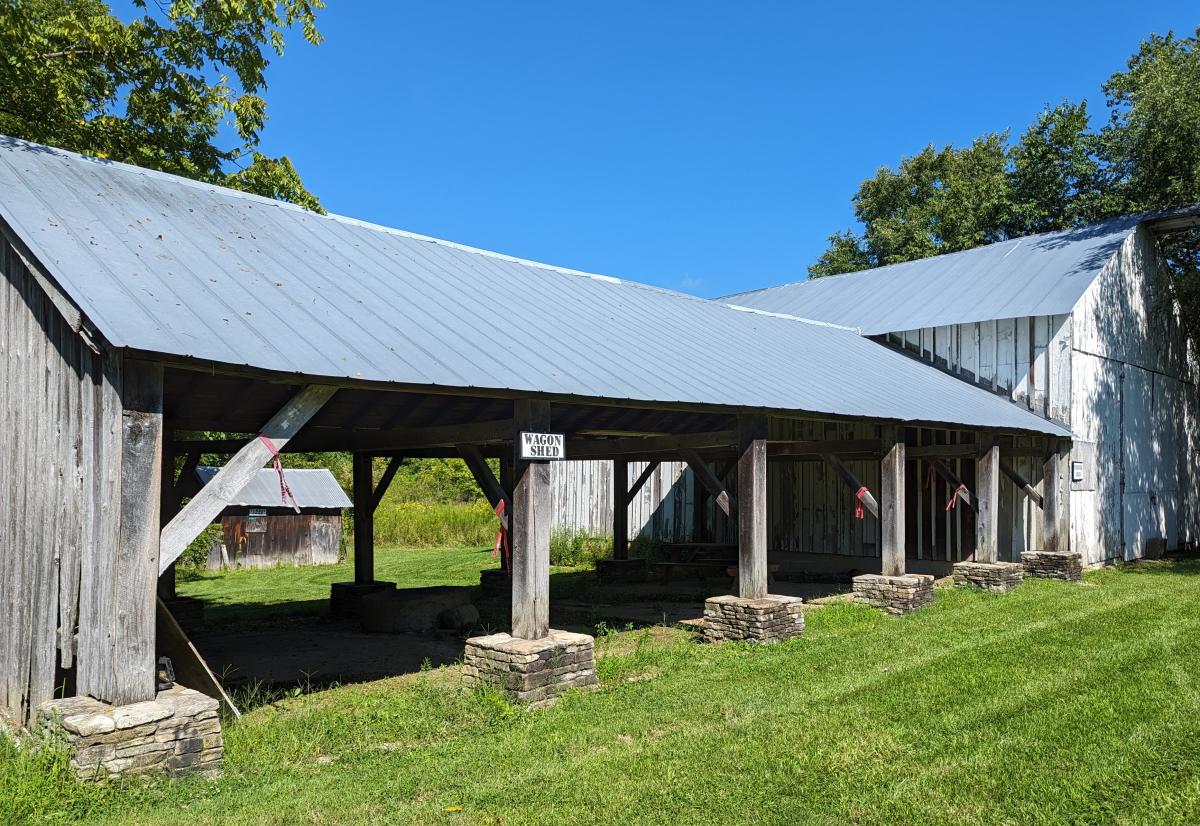
White Water Shaker Village Open House – Passport to the Past
The Friends of White Water Shaker Village are hosting an open house on Saturday, October 7 for the 6th annual “Passport to the Past”, showcasing 5 historical sites in Crosby and Harrison Townships. Guests can explore the property and learn about Shaker daily life, business the Shakers conducted and celebrate the village’s 200th anniversary.
Dot and I had a wonderful time exploring and learning about the White Water Shaker Village. I have passed these historic buildings several times and had never known their history and or the history of the once thriving community that built them. While White Water Shaker Village does not have standard operating hours, their open house events are posted on their website and Facebook pages. If you are interested in a private or group tour, you can reach out to them directly, tours are subject to availability and weather permitting.
Are you looking for other great places to explore in the NKY and Cincy Region? Check out our website for more information and recommendations.
